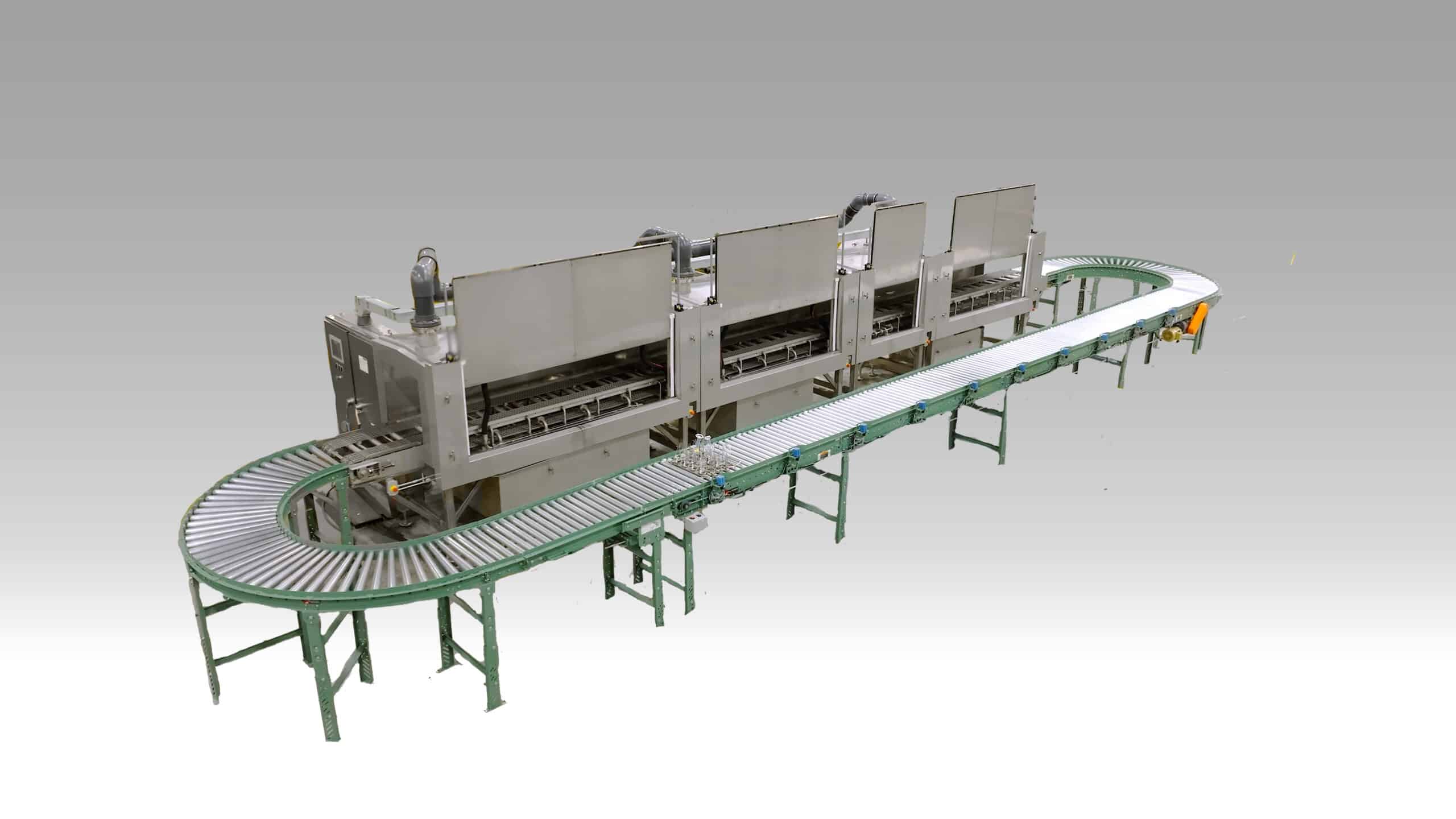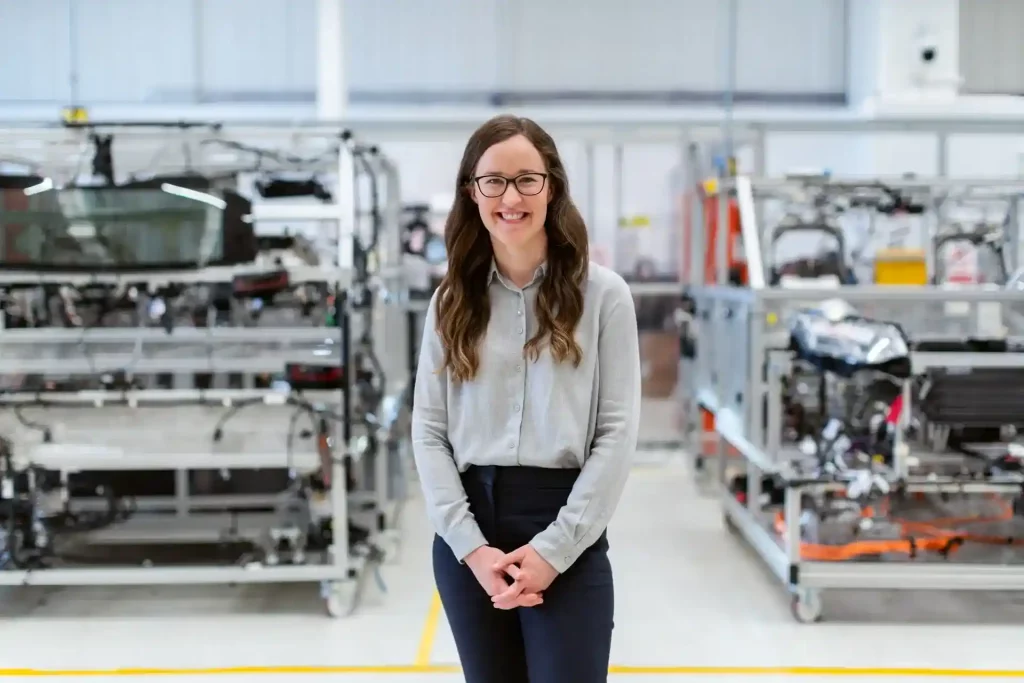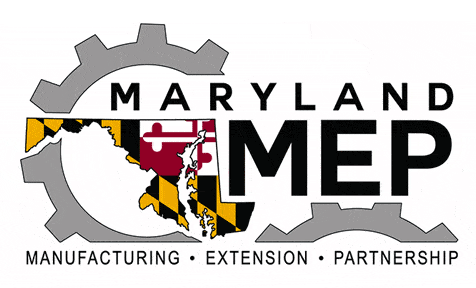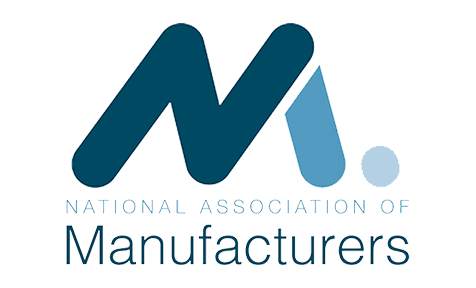When selecting machinery and equipment for an industrial operation, it is vital to consider the environment in which they will be used. Many machines must withstand frequent washdowns or be easily cleaned without corrosion or damage. For these types of applications, it is vital to understand washdown and NEMA ratings to ensure you have chosen the best machines for your needs.
What Are Washdown Rated Compatible Cleaning Machines?
Washdown refers to thoroughly cleaning open and accessible large equipment and machinery surfaces using a high-pressure spray of hot water and chemicals. These ratings indicate how resistant the equipment is to the penetration of moisture, dust, and other contaminants. In parts washing, washdown ratings are important as they determine the machine’s ability to withstand the rigorous cleaning processes involving high-pressure water or steam. It is crucial that liquids and solids throughout the environment not interfere with the performance of electrical equipment. Therefore, machines must be washdown rated to withstand whatever the processing facility requires washdown process.
One commonly used system to measure the degree of protection against moisture is the IP (Ingress Protection) rating. The IP rating is a two-digit number, with the first digit representing the level of protection against solid objects such as dust and debris, while the second digit indicates the level of protection against water. The higher the digits, the better the protection. For example, an IP65 rating means the machine is dust-tight and can withstand low-pressure water jets from any direction. On the other hand, an IP69K rating provides the highest level of protection against water, making the machine suitable for high-pressure, high-temperature washdowns.
Understanding the different IP ratings and their implications is crucial when choosing washdown-compatible machines for parts washing. It ensures that the machine can withstand the cleaning process without compromising its performance or causing safety hazards. By selecting a machine with the appropriate washdown rating, you can optimize the cleaning efficiency, minimize downtime, and prolong the lifespan of the equipment.
Furthermore, food and beverage processing environments are subject to strict hygiene and safety requirements. Notably, the Food Safety Modernization Act (FSMA) requires a proactive approach to controlling contamination hazards. As such, many processors rely on wet cleaning methods to routinely wash and sanitize surfaces and equipment to remove allergens and prevent the growth of harmful microorganisms. Equipment on the production floor that is too large to move requires a washdown procedure in place.
What Are IP Ratings in Food and Beverage Processing?
The IEC International Electrotechnical Commission developed the Ingress Protection (IP) ratings, which grade the resistance of electrical component enclosures against the intrusion of solid particles or liquids. Therefore, they measure how tightly sealed and watertight an electrical section is.
IP washdown ratings, or codes, classify sealing effectiveness using a series of letters and numbers. Firstly, each code begins with the letter “IP,” denoting Ingress Protection. Then, two digits subsequently follow these letters. The first digit is intrusion protection and shows the equipment’s level of protection against ingress from solids, such as dust, dirt, and foreign objects. The second digit is moisture protection and indicates the level of protection against various forms of moisture and liquids (condensation, drips, sprays, submersion, etc.)
What Are Safe Washdown Levels of Protection?
The IEC rates protection from ingress on a scale of 0-6. These levels refer to the size of the object or particle the enclosure can keep out. The larger the object, the lower rating it will have. Conversely, the smaller the particle, the high rating it will have. For instance, a rating of 6 means no ingress of dust is permitted.
Levels of ingress protection against liquids are rated 0-9. These levels refer to the movement, depth, and pressure of water the enclosure can resist. The higher the number, the greater the water resistance. For example, a rating of 2 protects against vertically falling droplets like condensation. Whereas a rating of 6 protects against high-pressure water jets and a rating of 8 protects against submersion in water.
What Are NEMA Machine Ratings?
The National Electrical Manufacturer Association (NEMA) uses a standard rating system that defines what type of environment an electrical enclosure can be used in. NEMA 4X enclosures have an equivalent IP rating of IP66 and feature the following protective qualities:
- Suitable for indoor or outdoor use
- Prevents liquid and solid ingress
- Inhibits water ingress from rain, sleet, snow, splashing water, and hose-directed water
- Shields against solid ingress from airborne dust, dirt, fibers, debris, and other foreign objects
- Protects against damage from ice forming on the outside of the enclosure
- Resistant to corrosion
Therefore, NEMA 4X enclosures are ideally suited for use in washdown environments.
How Do Better Engineering Machines meet Washdown-Rated Equipment Standards?
Better Engineering designed our sanitary line of (316) stainless steel cleaning systems to the highest hygienic standards with industry-leading capabilities. These fully automatic machines are generally built to “clean design principles” and meet virtually all 3-A standards. Furthermore, all models in our sanitary line of cleaning systems feature a central control station with a NEMA 4X control panel for use in washdown environments.
The cabinets are hygienic by design, with sanitary spray and dry manifolds, sloped floors to avoid standing water, and continuous inside welding (TIG). Additionally, systems feature a self-cleaning work tank that can fill and empty with each stage. Available options include an optional holding tank to reuse the wash solution, an optional hot water supply tank, and an optional drying stage. Furthermore, the systems can incorporate robotic integration, multi-lane, and adjustable lane options to accommodate various part sizes and choices of heating – steam, gas, or electric. Available sanitary cleaning systems include:
- batch washers
- bin washers
- vat washers
- rack washers
- cabinet washers
- conveyor/tunnel washers
- other custom-made solutions
Significantly, these highly versatile systems optimize production processes and ensure effective hygienic cleaning and sanitizing of various food and beverage processing equipment and parts.
Why are washdown ratings important in parts washing?
Washdown ratings are crucial when it comes to parts washing machines because they determine the level of protection against water and other contaminants. In the parts-washing process, machines are subjected to high-pressure jets of water and various cleaning agents. Without the proper washdown ratings, these machines would be susceptible to damage, corrosion, and even malfunctioning.
Water and cleaning agents can easily penetrate into sensitive areas of a machine, such as electrical components if it is not adequately protected. This can lead to short circuits, component failure, and costly repairs or replacements. Moreover, if a machine is not washdown compatible, it may not be able to withstand the rigorous cleaning process, leading to frequent breakdowns and downtime in production.
By investing in washdown-compatible machines with the appropriate ratings, businesses can ensure that their parts-washing process runs smoothly and efficiently. Washdown ratings indicate the level of protection against water and contaminants, making it easier for businesses to choose machines that meet their specific needs.
How Do you Choose a Washdown Compatible Machine?
When it comes to parts washing, it is important to choose a machine that is washdown compatible. This means that the machine is designed to withstand frequent exposure to water and cleaning chemicals without rusting or deteriorating.
When selecting a washdown-compatible machine, it is important to consider the cleaning you will be doing. For example, if you are cleaning heavy machinery or large parts, you may need a machine with a larger capacity and more powerful spray nozzles.
Additionally, it is crucial to consider the material of the machine. Stainless steel is a popular choice for washdown-compatible machines as it is durable and corrosion-resistant.
When selecting a machine, be sure to check the washdown rating. Look for machines with at least a NEMA 4X rating, which indicates that the machine can withstand heavy water spray and high-pressure cleaning.
Lastly, consider the maintenance and upkeep of the machine. A machine that is easy to clean and maintain will last longer and require less repair. Look for machines with easy-to-access components and minimal crevices where dirt and grime can build up.
Overall, choosing a washdown-compatible machine requires careful consideration of the cleaning you will be doing, the material of the machine, the washdown rating, and the maintenance requirements. Selecting a suitable washer ensures that your parts-washing process is efficient, effective, and long-lasting.
How do you Maintain Washdown Compatible Machines?
Once you’ve invested in a washdown-compatible machine for your parts washing needs, it’s essential to maintain it to ensure its longevity and efficiency properly. Here are some essential maintenance tips to keep in mind:
- Regular Cleaning: After each use, clean the machine thoroughly. Use mild detergents and non-abrasive cleaners to avoid damaging the surface. Pay special attention to areas prone to buildup, such as nozzles and filters.
- Inspect and Replace Seals: Over time, seals can wear out or become damaged, compromising the washdown compatibility of the machine. Regularly inspect seals for wear or leaks and replace them to maintain the machine’s integrity.
- Lubrication: Regularly check the machine’s lubrication points and apply the recommended lubricant as needed. This will help ensure smooth operation and prevent excessive wear on moving parts.
- Regular Maintenance Checks: Schedule routine maintenance checks to identify and address any potential issues before they become major problems. This can include checking electrical connections, inspecting hoses and pipes, and ensuring all components function correctly.
- Follow Manufacturer’s Guidelines: Always refer to the manufacturer’s guidelines and recommendations for maintenance and care. These guidelines are designed to optimize the performance and lifespan of the machine, so it’s essential to follow them closely.
By following these maintenance tips, you can maximize the lifespan and performance of your washdown-compatible machine, ensuring that it continues to meet your parts-washing needs effectively.
What is Better Engineering’s Commitment to Quality?
Better Engineering’s sanitization machines offer the highest quality levels with trackable and repeatable results that don’t change over time. In addition, our machines meet all regulatory food and safety standards set by FSMA, HACCP, and GMP.
Our research lab can demonstrate the full potential of our washing and sanitizing systems using your parts. Send us the items you want cleaned, and we will test them to find the best machine recommendation. Contact us for a free test parts cleaning. We guarantee that we’ll find a solution that meets all your needs- it’s part of our commitment to customer satisfaction!





